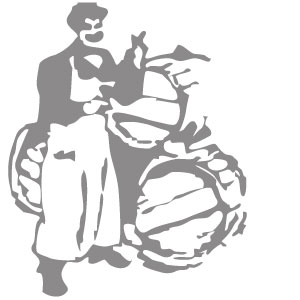The French wine region of Beaujolais has long been considered part of Burgundy, but today it charts its own course. The more serious crus designations of Beaujolais drink a lot like red Burgundy. Click here to learn more about our beloved Beaujolais…
Chez François presents
A 2024 Beaujolais Nouveau Celebration
with James Francisco of Kysela Pere et Fils Imports
Friday, November 22, 2024 – 6:30 pm

Our 38th year celebrating the arrival of Beaujolais Nouveau!
This has been one of our longest Events at Chez François, it has always been a fun event featuring a collection of wines from our friend Fran Kysela’s import wine company. This year’s lineup will include wines from France, Argentina, Australia and South Africa, paired with a six-course dinner prepared by Chef John D’Amico and his staff. This dinner will sell out! For reservations call (440) 967-0630 or email matt@chezfrancois.com
Aperitif
Alain de la Treille, Symphonie Cremant de Loire Brut – NV
Sweet Dumpling Squash & Curry Soup
Cream of sweet dumpling squash and curry soup garnished with a Maine Sea Scallop and micro greens.
Bihan, Revelation, Touraine Chenonceaux, Loire Valley, France, 2022
Lismore, Sauvignon Blanc, Greyton, South Africa, 2021
Maine Lobster Quiche, Truffle Hollandaise
A flaky pie crust filled with a savory custard with Maine Lobster, eggs, cream, shallots and Gruyère cheese with a truffle hollandaise sauce.
Kasteelberg, Chenin Blanc, Swartland, South Africa, 2022
Gaudrelle, Vouvray, Clos Vigneau, Loire Valley, France, 2022
Braised Beef Short Rib & Pappardelle Noodles, Bourguignon
Pappardelle noodles flavored with fine herbs, with braised beef short rib sauced with a rich glace viande reduction with apple wood smoked bacon, with a jardinière of fall root vegetables.
Carra (Dom. Man.) Beaujolais-Villages “Nouveau”, Beaujolais/Burgundy, France, 2024
Carra (Dom. Man.), Beaujolais Cru Brouilly, Beaujolais/Burgundy, France, 2023
Seasonal Wild Mushroom, Truffles & Foie Gras, en Croûte
Wild mushroom and truffle consommé, with Foie Gras, duck confit and Black “Burgundy” Truffles topped with puff pastry.
Grenache “Single Vineyard” , Thorn Lake, Barossa Valley, Australia, 2021
Maison du Midi, Chateauneuf du Pape Rouge, Rhone Valley, France 2023
Char-Grilled Berkshire Pork Tenderloin, Hickory Smoked Wild Mushroom & Huckleberries
Char-grilled pork tenderloin, butternut squash purée, finished with smoked fall wild woodland mushroom mountain huckleberry reduction.
Viejo Isaias, Juana, Cabernet Franc, Mendoza, Argentina, 2020
Luccianus, Amphore, Lussac St. Emilion, France, 2021
Apple Frangipane Tar
Carod, Clairette de Die, Rhone Valley, France, NV
$165/Per Guest
Tax and gratuity not included.
All pricing reflects a cash & check payment. A 2.75% non-cash/check adjustment is included in all other forms of payment.
Beaujolais “Nouveau”
As far back as the 1800s, Beaujolais growers would gather to celebrate the end of the harvest by toasting the vintage with some of the young wine produced that year. (This is part of the French tradition of vin de primeur, or “early wines”, released in the same year as harvest, which 55 appellations in France are allowed to produce.) During this time, Lyonnais barkeepers and restaurateurs had been in the habit of buying barrels of this new Beaujolais wine, that had been pressed in September and ready to serve in November. The new wine was served via pitchers dipped into barrels. The barrels were sometimes transported simply by floating them down the Saône river.[2] Once the Beaujolais AOC was established in 1937, AOC rules meant that Beaujolais wine could only be officially sold after 15 December in the year of harvest.[3]These rules were relaxed in November 1951,[3] and the Union Interprofessionnelle des Vins du Beaujolais (Uivb) formally set 15 November as the release date for what would henceforth be known as Beaujolais nouveau. In 1985 the Institut National des Appellations d’Origine (INAO) established the third Thursday of November to allow for a uniform release date for the wine.
The wine used to be released from France at 12:01 on the third Thursday of November. During the 2000s the release rules started to relax, with the wines shipped ahead of time, and released to local markets at 12:01 a.m. local time. Starting in the 2010s, it started to be sent to retailers ahead of the third Thursday, with instruction not to sell it until the third Thursday.[citation needed]
Some members of the UIVB saw the potential for marketing Beaujolais nouveau by capitalising on fast distribution of the vintage, starting with a race to get the first bottles to Paris. In the 1960s, races from English clubs rewarded the drivers who returned the quickest with the most wine (sometimes resulting in spare tyres being left in Beaujolais).[4] There continued to be more media coverage, and by the 1970s it had become a national event. The races spread to neighbouring countries in Europe in the 1980s, followed by North America, and in the 1990s to Asia.[3]
Until 1972, New York was the only US city to import Beaujolais nouveau. That year, Minneapolis became the second US city to import it; now, it is available in most US metropolis areas, and in many large cities across the globe.[5]

